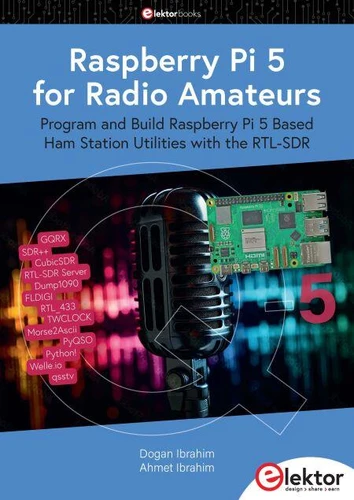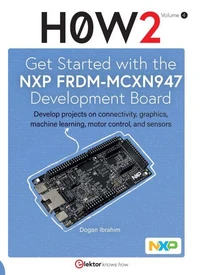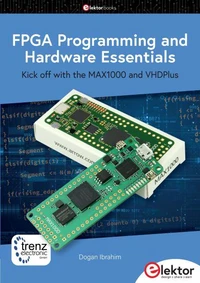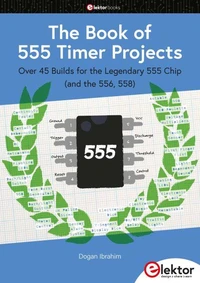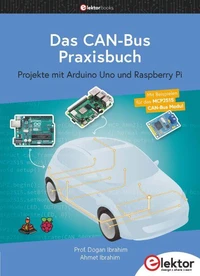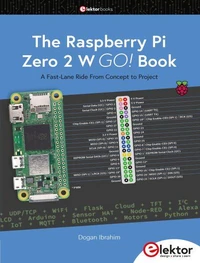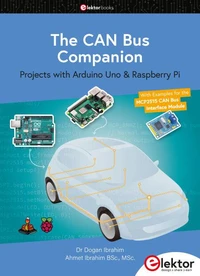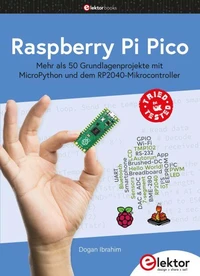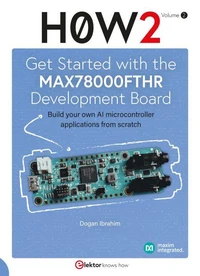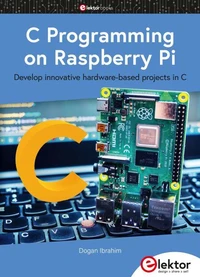Raspberry Pi 5 for Radio Amateurs
Par : ,Formats :
Disponible dans votre compte client Decitre ou Furet du Nord dès validation de votre commande. Le format ePub est :
- Compatible avec une lecture sur My Vivlio (smartphone, tablette, ordinateur)
- Compatible avec une lecture sur liseuses Vivlio
- Pour les liseuses autres que Vivlio, vous devez utiliser le logiciel Adobe Digital Edition. Non compatible avec la lecture sur les liseuses Kindle, Remarkable et Sony
 , qui est-ce ?
, qui est-ce ?Notre partenaire de plateforme de lecture numérique où vous retrouverez l'ensemble de vos ebooks gratuitement
Pour en savoir plus sur nos ebooks, consultez notre aide en ligne ici
- Nombre de pages303
- FormatePub
- ISBN978-3-89576-678-7
- EAN9783895766787
- Date de parution07/05/2024
- Protection num.Digital Watermarking
- Taille23 Mo
- Infos supplémentairesepub
- ÉditeurElektor
Résumé
The RTL-SDR devices (V3 and V4) have gained popularity among radio amateurs because of their very low cost and rich features. A basic system may consist of a USB based RTL-SDR device (dongle) with a suitable antenna, a Raspberry Pi 5 computer, a USB based external audio inputoutput adapter, and software installed on the Raspberry Pi 5 computer. With such a modest setup, it is possible to receive signals from around 24 MHz to over 1.7 GHz.
This book is aimed at amateur radio enthusiasts and electronic engineering students, as well as at anyone interested in learning to use the Raspberry Pi 5 to build electronic projects.
The book is suitable for both beginners through experienced readers. Some knowledge of the Python programming language is required to understand and eventually modify the projects given in the book. A block diagram, a circuit diagram, and a complete Python program listing is given for each project, alongside a comprehensive description. The following popular RTL-SDR programs are discussed in detail, aided by step-by-step installation guides for practical use on a Raspberry Pi 5: > SimpleFM > GQRX > SDR++ > CubicSDR > RTL-SDR Server > Dump1090 > FLDIGI > Quick > RTL_433 > aldo > xcwcp > GPredict > TWCLOCK > CQRLOG > klog > Morse2Ascii > PyQSO > Welle.io > Ham Clock > CHIRP > xastir > qsstv > flrig > XyGrib > FreeDV > Qtel (EchoLink) > XDX (DX-Cluster) > WSJT-X The application of the Python programming language on the latest Raspberry Pi 5 platform precludes the use of the programs in the book from working on older versions of Raspberry Pi computers.
The book is suitable for both beginners through experienced readers. Some knowledge of the Python programming language is required to understand and eventually modify the projects given in the book. A block diagram, a circuit diagram, and a complete Python program listing is given for each project, alongside a comprehensive description. The following popular RTL-SDR programs are discussed in detail, aided by step-by-step installation guides for practical use on a Raspberry Pi 5: > SimpleFM > GQRX > SDR++ > CubicSDR > RTL-SDR Server > Dump1090 > FLDIGI > Quick > RTL_433 > aldo > xcwcp > GPredict > TWCLOCK > CQRLOG > klog > Morse2Ascii > PyQSO > Welle.io > Ham Clock > CHIRP > xastir > qsstv > flrig > XyGrib > FreeDV > Qtel (EchoLink) > XDX (DX-Cluster) > WSJT-X The application of the Python programming language on the latest Raspberry Pi 5 platform precludes the use of the programs in the book from working on older versions of Raspberry Pi computers.
The RTL-SDR devices (V3 and V4) have gained popularity among radio amateurs because of their very low cost and rich features. A basic system may consist of a USB based RTL-SDR device (dongle) with a suitable antenna, a Raspberry Pi 5 computer, a USB based external audio inputoutput adapter, and software installed on the Raspberry Pi 5 computer. With such a modest setup, it is possible to receive signals from around 24 MHz to over 1.7 GHz.
This book is aimed at amateur radio enthusiasts and electronic engineering students, as well as at anyone interested in learning to use the Raspberry Pi 5 to build electronic projects.
The book is suitable for both beginners through experienced readers. Some knowledge of the Python programming language is required to understand and eventually modify the projects given in the book. A block diagram, a circuit diagram, and a complete Python program listing is given for each project, alongside a comprehensive description. The following popular RTL-SDR programs are discussed in detail, aided by step-by-step installation guides for practical use on a Raspberry Pi 5: > SimpleFM > GQRX > SDR++ > CubicSDR > RTL-SDR Server > Dump1090 > FLDIGI > Quick > RTL_433 > aldo > xcwcp > GPredict > TWCLOCK > CQRLOG > klog > Morse2Ascii > PyQSO > Welle.io > Ham Clock > CHIRP > xastir > qsstv > flrig > XyGrib > FreeDV > Qtel (EchoLink) > XDX (DX-Cluster) > WSJT-X The application of the Python programming language on the latest Raspberry Pi 5 platform precludes the use of the programs in the book from working on older versions of Raspberry Pi computers.
The book is suitable for both beginners through experienced readers. Some knowledge of the Python programming language is required to understand and eventually modify the projects given in the book. A block diagram, a circuit diagram, and a complete Python program listing is given for each project, alongside a comprehensive description. The following popular RTL-SDR programs are discussed in detail, aided by step-by-step installation guides for practical use on a Raspberry Pi 5: > SimpleFM > GQRX > SDR++ > CubicSDR > RTL-SDR Server > Dump1090 > FLDIGI > Quick > RTL_433 > aldo > xcwcp > GPredict > TWCLOCK > CQRLOG > klog > Morse2Ascii > PyQSO > Welle.io > Ham Clock > CHIRP > xastir > qsstv > flrig > XyGrib > FreeDV > Qtel (EchoLink) > XDX (DX-Cluster) > WSJT-X The application of the Python programming language on the latest Raspberry Pi 5 platform precludes the use of the programs in the book from working on older versions of Raspberry Pi computers.

